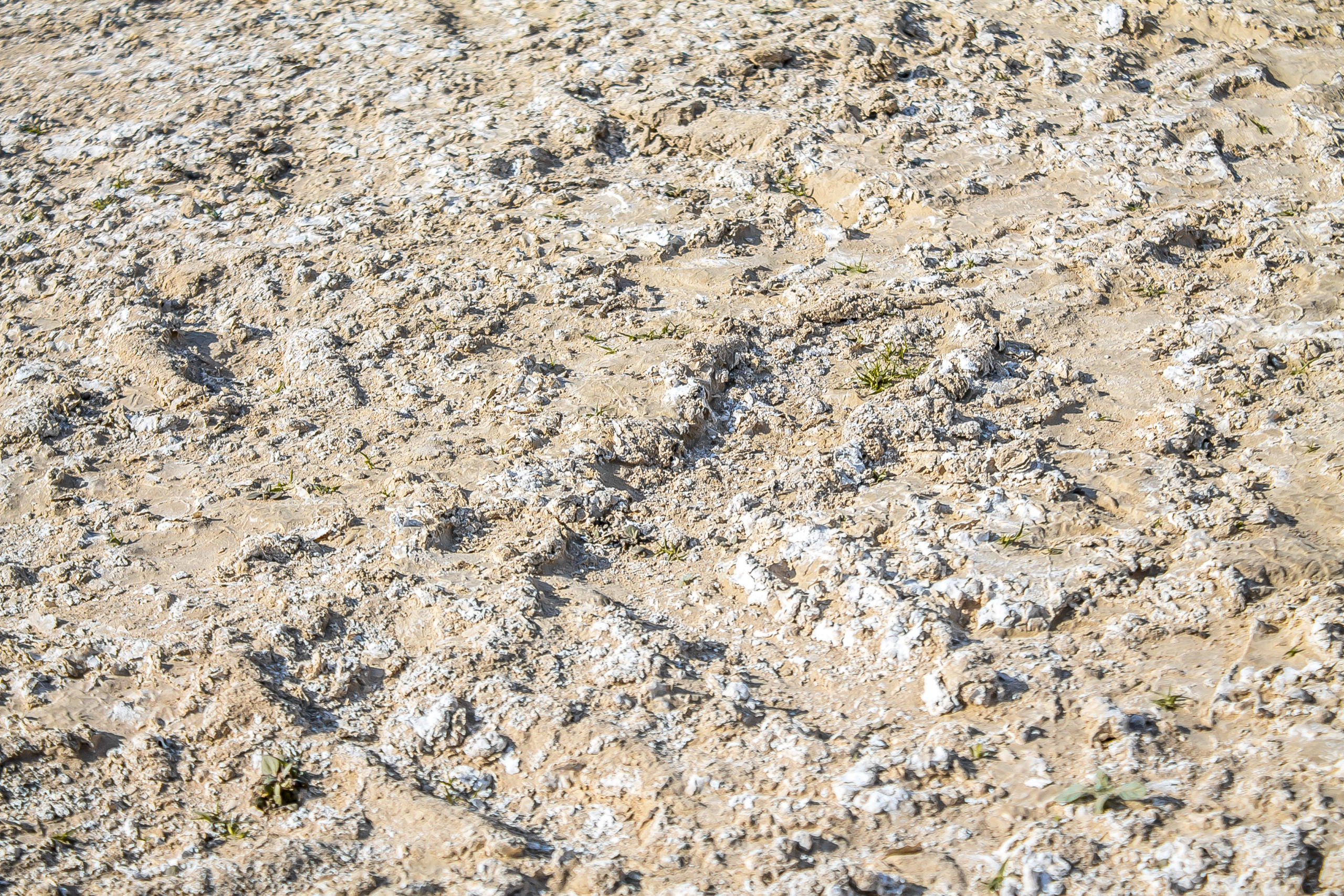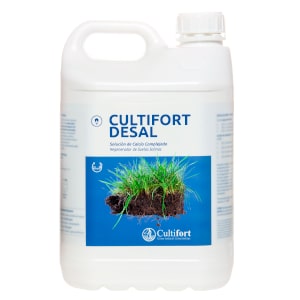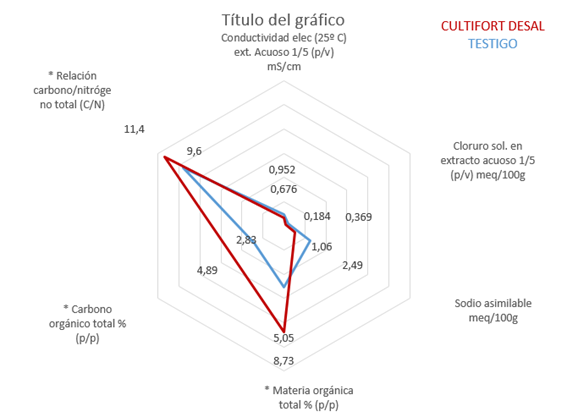Observing the vulnerable and sensitive areas for salinity according to the FAO World Map, more than 840 million hectares are affected by this issue. This is summarized in a difficulty for the proper vegetative development of crops, as it alters their ability to absorb nutrients and water.

Causes of Increased Soil Salinity During the 2023 Agricultural Campaign:
- Lack of Precipitation: Given the scarcity of rainfall, it is crucial to implement effective water management practices.
- Evaporation Control: The high rate of evaporation contributes to the increase in soil salinity on the surface.
- Irrigation Water Quality: It is crucial to avoid the use of water rich in salts for irrigation. Periodic analysis of irrigation water should be conducted to ensure it does not contribute to the increase in soil salinity.
- Sea Level Rise.
- Improper Fertilizer Application.
- Excessive Nitrogen from chemicals accelerates and increases soil salinity.
In connection with this, specialists have observed in recent months an increase in electrical conductivity in the irrigation water of specific areas in southern Spain that used to maintain optimal water quality. This deterioration can lead to saline stress in most crops
Aware of the significant issue that salinity poses for agricultural development, not only in Spain but in other countries as well, Cultifort provides a solution with proven results that can be used to study and address this problem in detail. This solution is based on the components of the Cultifort Desal formulation.
We have observed that most products used to combat salinity can present drawbacks in terms of handling, application, efficacy, and mixing. So, we began studying the possibility of improving the action and characteristics of these traditional products. To do this, we conducted a literature review of all scientific articles published in databases related to salinity and components that could be more effective against this issue.
The study of a large number of scientific articles related to salinity and the application of various agrochemicals led us to formulate a series of hypotheses as to why a new saline corrector formulation could significantly improve upon existing traditional products in the market.
From our perspective, traditional saline correctors present the following drawbacks:
Regarding soil salts: The focus of these products is solely on removing sodium from the soil. It should be noted that in most cases where such products are applied, the origin of salinity is primarily conditioned by irrigation with saline water and/or intensive crop management that requires the continuous application of soluble fertilizers (Pizarro, 1996). Although these products manage to remove some of the soil sodium, they cannot solve the salinity problem at its source, and, therefore, the remaining non-sodium salts contributing to salinity persist in the soil.
Regarding calcium action: In most products, calcium is weakly retained by the chelating agents to which it is associated. Thus, it is very easily assimilated in the short term by the plant, and, therefore, a large part of the applied calcium is absorbed by the crop, losing its effectiveness at the soil level.
In response to this, we propose a formulation with the following components: CALCIUM OXIDE (CaO) CHELATED… 10% w/w Lignosulfonic Acid ORGANIC CALCIUM COMPOUNDS POLYPHENOLIC COMPOUNDS POLYCARBOXYLIC ACIDS. Cultifort Desal not only presents itself as a simple saline corrector but also as a powerful biostimulant to mitigate abiotic and oxidative stress caused by salinity, based on the constituents of the formulation.
Phenols are organic elements with a structure that includes at least one phenol group, an aromatic ring linked to at least one hydroxyl functional group. The importance of flavonoids as mitigators of oxidative stress lies in their chemical structure, which includes a variable number of phenolic hydroxyl groups and remarkable metal chelation properties.
What is the antioxidant effect of phenols? Phenolic groups are sensitive to oxidation and, therefore, have a marked antioxidant character, protecting against reactions derived from photosensitivity, free radicals, among others.
How does the antioxidant function of phenols relate to the improvement of abiotic stress? Certain groups function at the physiological level as cellular signaling under stress conditions, while others act by stabilizing and structuring cells at the membrane level, thus balancing the degree of fluidity. Regarding thylakoid membranes, these antioxidant species have the ability to reduce levels of reactive oxygen species (ROS) in chloroplasts. It is known that various types of stress generate reactive oxygen species, such as drought or salinity, disrupting the oxidation-reduction balances of chloroplasts and progressively damaging elements such as lipids, nucleic acids, and proteins, which can lead to cell death. Thus, this set of antioxidants combines to mitigate (ROS) toxicity.
Another characteristic of Lignosulfonic Acid (hereafter, LS) used in this product is its high quality. LS is a natural polymer produced as a byproduct of paper manufacturing by the bisulfite method from wood pulp in the paper industry. As a natural polymer, it presents a variable and not entirely defined chemical structure. It is a complex mixture of small to moderately sized polymeric compounds with sulfonic groups attached to the molecule and with diverse chelating capabilities (AENOR, 2011). Differences in chelation capacity depend on the type of wood used as raw material (De la Macorra, 2004) and the extraction process carried out, depending on the type of “cooking.”




